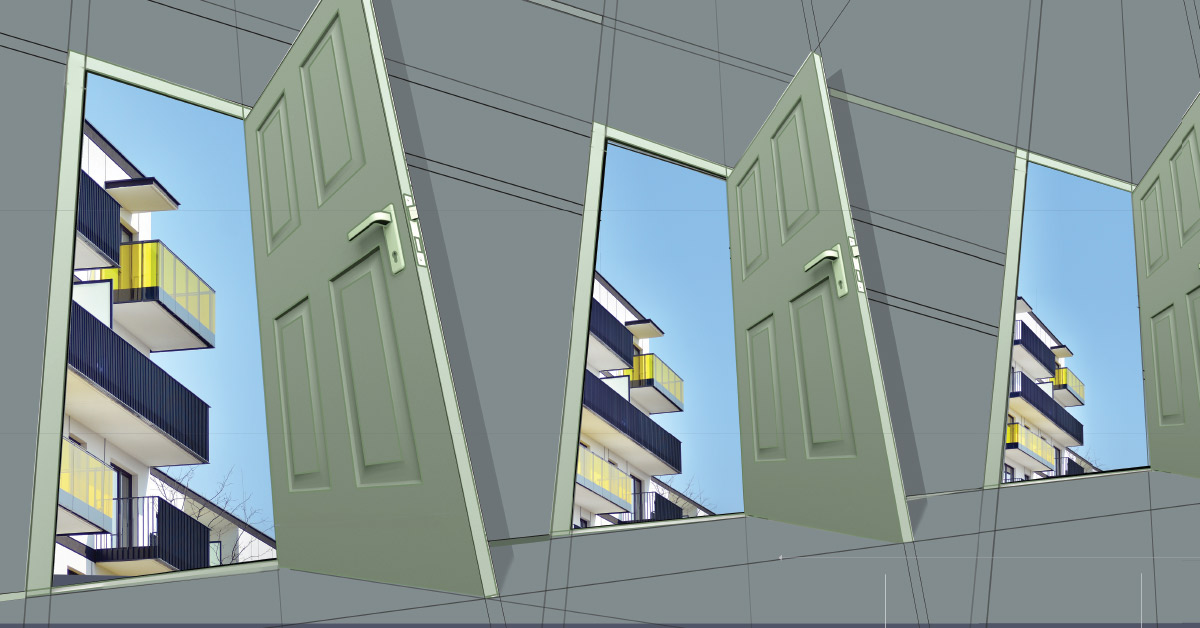The U.S. is facing an affordable-housing crisis. According to the National Low Income Housing Coalition (NLIHC), no state has an adequate supply of affordable apartments. There’s a need for more than 7 million affordable and available housing units nationwide, the advocacy group reports.
Commercial mortgage brokers have some options for clients working in this challenging space. The Federal Housing Administration (FHA) and government-sponsored enterprises (GSEs) Fannie Mae and Freddie Mac, for instance, have developed programs that can be paired with federal tax credits to get complicated apartment projects off the ground.
No state has an adequate supply of affordable rental housing for the lowest-income renters (defined as households with incomes at or below their state’s poverty guideline, or 30% of their area’s median income, whichever is higher), according to a March 2018 study from the NLIHC. States that top this list of inadequate supply include Nevada, which has only 19 affordable and available rental units for every 100 extremely low-income households, followed by California, which has 22 units for every 100 such households. Even Wyoming, which has the most affordable and available rentals as a percentage of extremely low-income households, still comes up short with 66 available units for every 100 households.
Multifamily-housing developers across the U.S., however, are working together with lenders and nonprofits, as well as federal and state housing agencies, to create opportunities for these families to live in dignity. As commercial mortgage professionals, it is our job to think through the best multifamily lending options on a case-by-case basis. This starts with an understanding of federal tax credits, which are typically needed to entice the capital needed to build and maintain affordable apartments.
Leveraging tax credits
Created by the Tax Reform Act of 1986, the Low-Income Housing Tax Credit (LIHTC) program has been the government’s most important tool in spurring the development and preservation of affordable rental housing. From 1995 to 2017, for example, an average of 1,411 projects and 107,000 housing units were supported annually through the program, while a total of more than 47,000 projects and 3.1 million units have been served since 1987, according to the U.S. Department of Housing and Urban Development (HUD).
Congress gives state and local LIHTC-allocating agencies about $8 billion per year so they can issue tax credits for the acquisition, rehabilitation or new construction of rental housing targeted to low-income households. The LIHTC program provides tax incentives designed to encourage developers and investors to build or preserve this type of rental housing.
A developer typically obtains the credits from a state housing authority through a competitive process, then sells them to investors. This generates equity for the project. Without the credits, these projects often don’t pencil out as profitable given the risk. Once the affordable units are in service, the investors can claim the tax credits for 10 years. Ultimately, the credits are designed to enable the owner to keep a dedicated number of affordable units for tenants making below-median wages.
The program offers two types of tax credits. The first is a 9% tax credit. These credits are often highly sought after by competing developers due to their limited supply. The 9% program is generally used for new construction. The second type is a 4% tax credit, which is combined with state bond financing and is generally used for acquisition, rehabilitation and some new construction.
There are two main types of 4% LIHTC projects. First are “affordable” projects in which at least 40% of the units are rented to tenants whose incomes do not exceed 60% of the area median income (AMI). The second type are “mixed-income” projects in which up to 80% of the apartments are market rate and at least 20% are reserved for tenants whose incomes do not exceed 50% of AMI.
Mortgage lenders have three attractive options in pairing commercial mortgage debt with tax credits to do low-income rental-housing deals. These projects are typically financed through investor equity raised via tax credits and a commercial mortgage that is backed in different ways by the federal government or the GSEs.
FHA option
One debt-program option is the Federal Housing Administration’s 221(d)(4) loan, which is guaranteed by HUD. It is often attractive to those in the multifamily industry because of its high leverage, low fixed interest rate and nonrecourse provisions. Typically, the loan is paired with a LIHTC bridge loan and a short-term bond issuance to fully develop or rehab a project.
The program has many benefits. One is fixed rates and stable terms over an exceptionally long period. The loans amortize over 40 years. The program offers a fixed rate during construction, with up to three years of interest-only payments. The loans come with a highly competitive rate, as they are insured by HUD and funded via Ginnie Mae-insured mortgage-backed securities. The program allows the developer to carry high debt loads relative to the overall construction cost of the project. The maximum loan-to-value ratio for a project with a significant affordable-rental component is 87%. The LTV ratio can go up to 90% for projects in which most of the apartments will be offered with rental assistance.
The FHA program has some downsides, however. The funding process can be grueling and take up to a year from application to closing. The development costs also tend to be higher. For construction and rehab projects, HUD requires that the developer pay prevailing wages subject to the Davis-Bacon Act of 1931.
GSE financing
Another option is Freddie Mac’s Tax-Exempt Loan (TEL), which can be used in conjunction with 4% low-income housing tax credits for deals involving affordable apartments. On ground-up construction projects, the permanent TEL is paired with a tax-exempt construction loan from a traditional bank. Freddie Mac works with a network of lenders, and markets the loan as a faster and more affordable option than other programs.
The unfunded, forward-committed TELs include a fixed-rate option. The rate can be locked in for three years at the time the developer closes on the construction loan. The permanent loan amortizes for up to a 35-year period and carries a maximum term of up to 30 years. As with the FHA option, the loan also allows for a high debt load relative to the value of the property with 90% loan to value. Overall, the loan typically has a lower fixed cost than other financing options. One downside of the program, however, is that Freddie charges fees to lock in the interest rate for the permanent mortgage.
A second GSE option is Fannie Mae’s M.TEB solution, which is similar in terms to Freddie Mac’s TEL. Fannie issues mortgage-backed securities that can be used as collateral for either the existing bond or new fixed-rate bonds made in conjunction with 4% low-income housing tax credits on construction, acquisition and rehab projects of affordable multifamily properties. Typically, this option comes with a lower interest rate than Freddie Mac’s TEL, but there can be greater fees associated with the bond issuance and investment negative arbitrage.
Author
-
Brian A. Emmons joined Merchants Bank in 2016 as the senior vice president of commercial banking and participations. His role is primarily focused on managing a national network of participating bank partners and developing business. Emmons holds a bachelor’s degree in finance from Indiana University’s Kelley School of Business, with a minor in accounting. His professional career includes more than 30 years of banking and finance experience in a variety of roles.
View all posts






